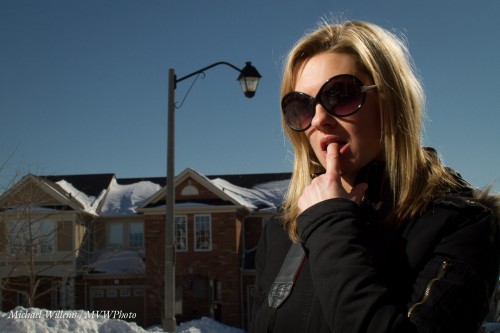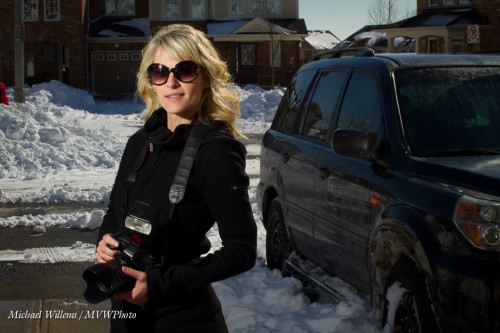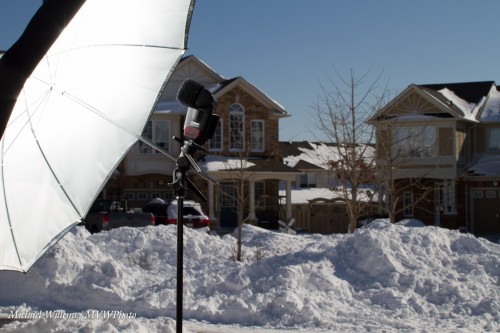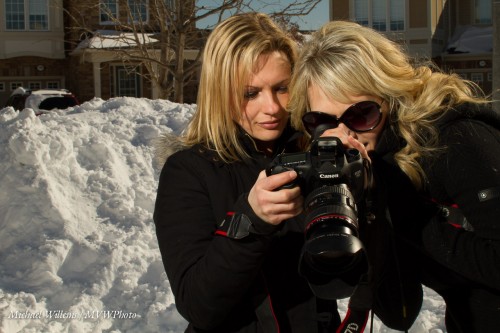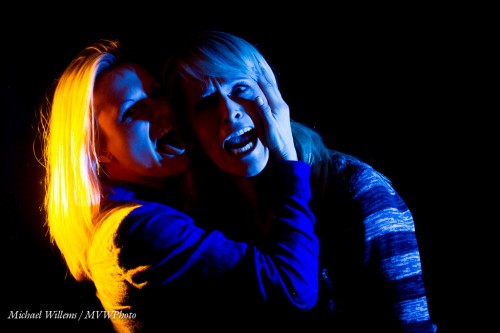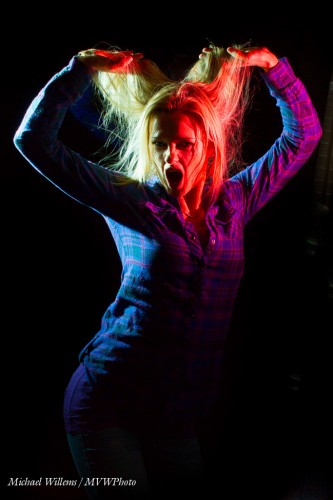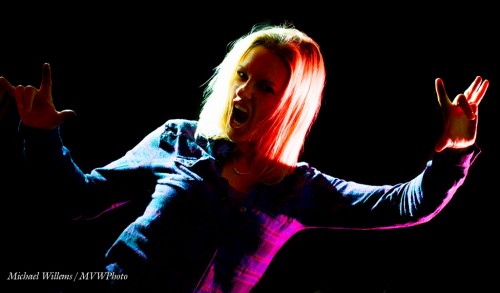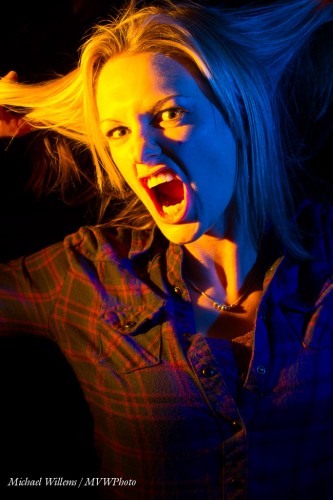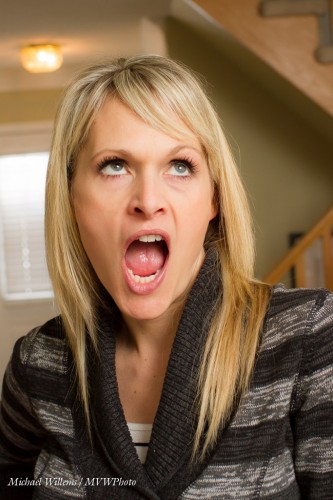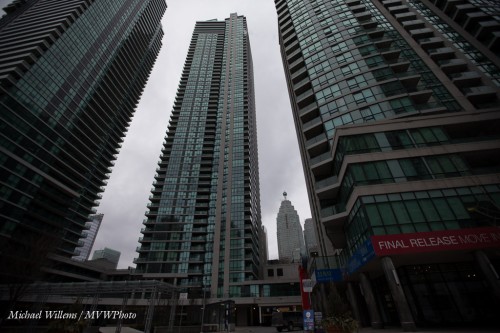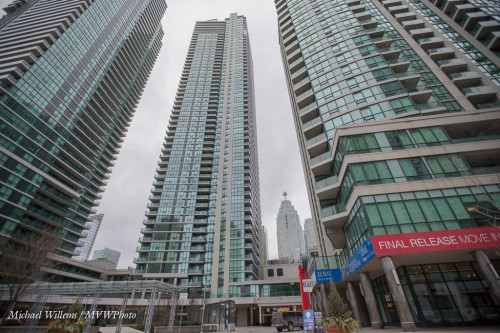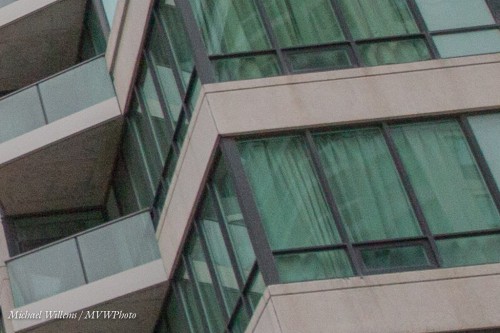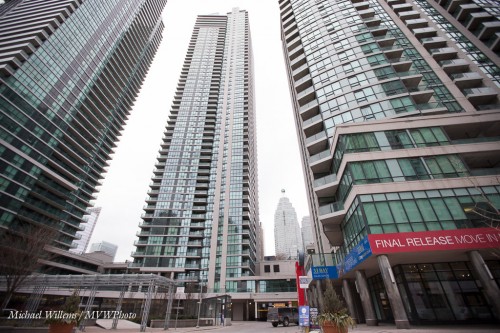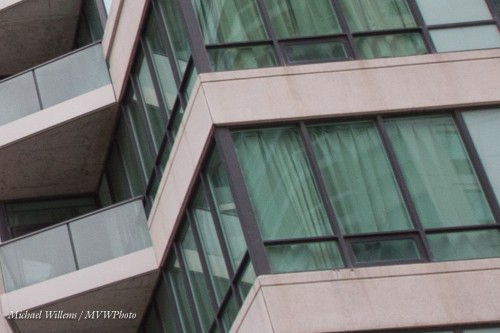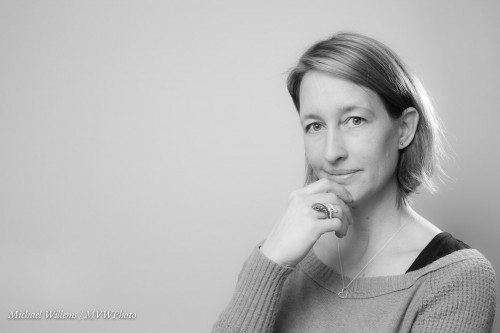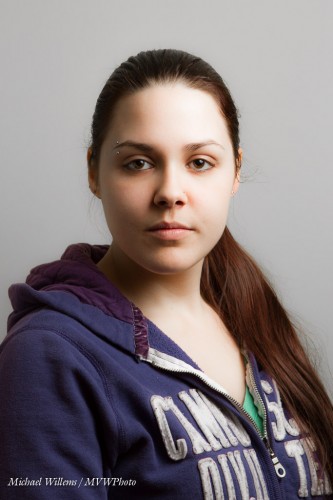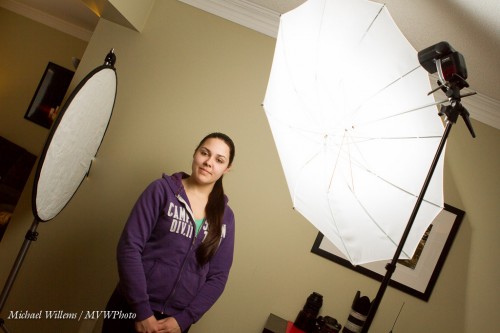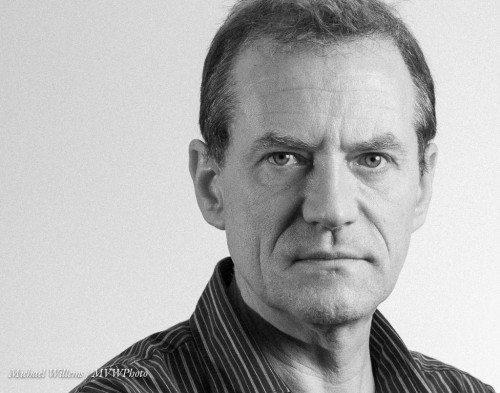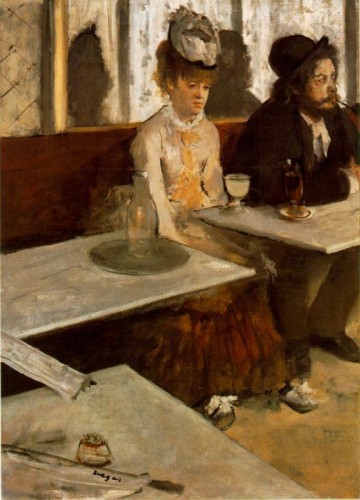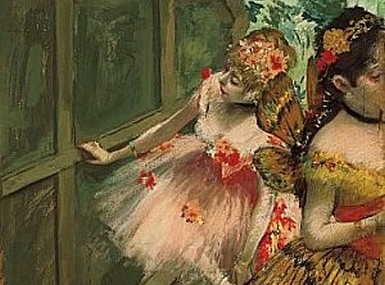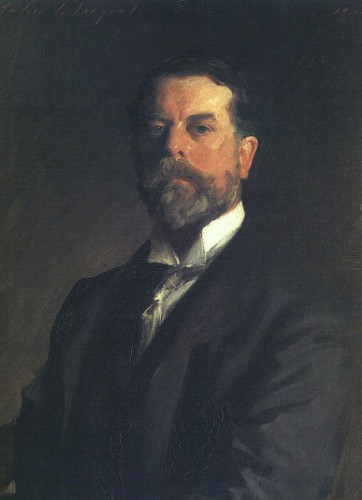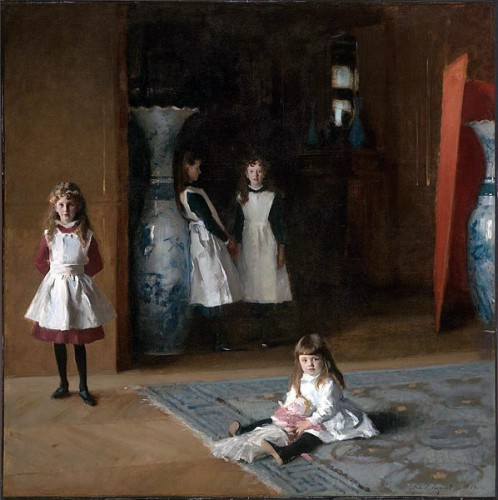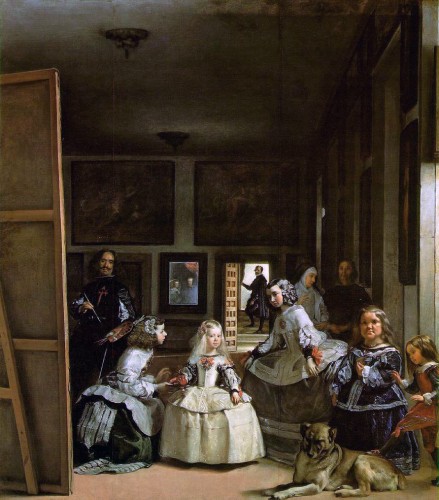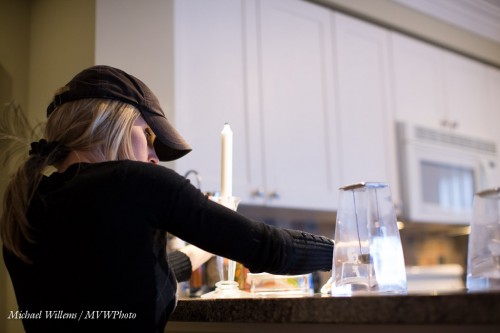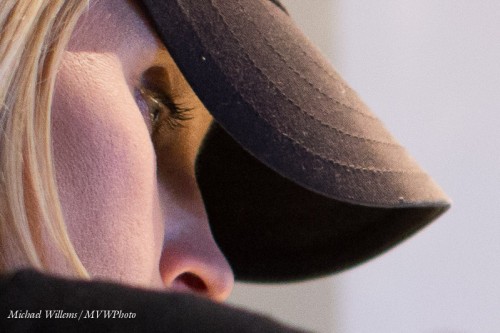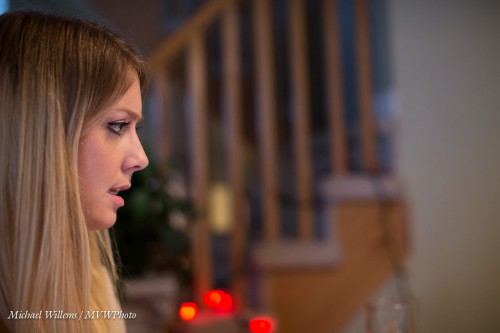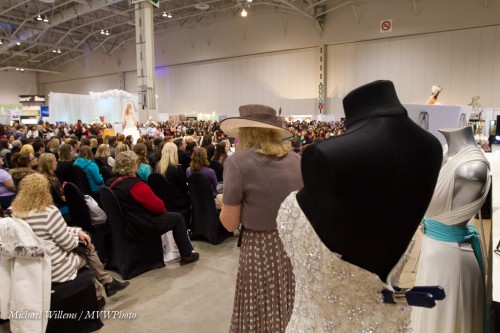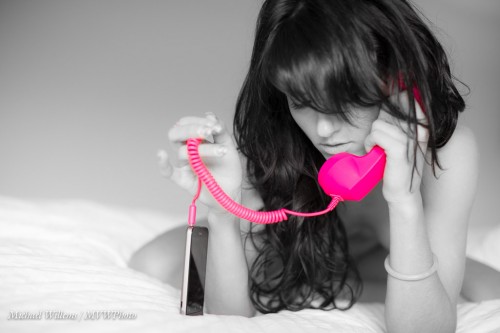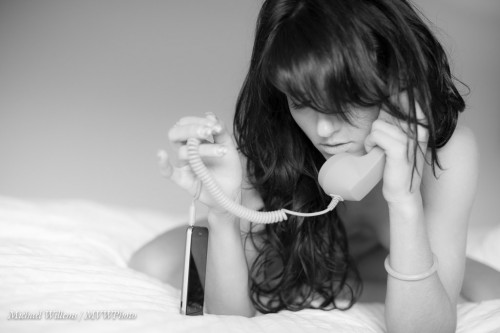Outside, right now. It is bright. Bright. Super-bright! Noon under a blue sky, and snow everywhere.
So now how do I do a dramatic portrait like these of my two students, wonderfully talented photographers Jenni and Becky (respectively)?
How indeed. Look at them full size to see the drama. Saturated colours plus plenty of personality! And that is how we shot them – no “Photoshopping”.
If I had used just my camera I would have had to angle them into the sun – bad. Instead, I prefer to:
- Angle them away from the sun to avoid squinting.
- Thus, use the sun for the hairlight (The “Shampoo-y Goodness”).
- Then, get a dark, saturated, background. First, I set my shutter speed to the fastest I can use: 1/250th second, the maximum flash sync speed.
- Then, I select a low ISO (100) and small aperture (wait for it: f/18).
- Then I use an off-camera TTL flash to light up the subjects. Yes, TTL, in this case: no need for Pocketwizards here.
Now, the challenge: enough flash. Unless the flash is very close, it will not work well if it is a simple speedlight. I tried shooting into an umbrella:
But this needed the umbrella to be a little closer than I liked, so I turned the flash around and shot direct, discarding the umbrella. Yes, you can use direct flash, unmodified, if you are mixing with ambient light, and if the flash is well off camera. This gives us short lighting.
Here’s the students:
And they did very well indeed: their photos are stunning. Dramatic, and they now have a whole new range of possibilities added to their repertoire. You should consider learning the same: yes, you can do this with simple equipment.
___
Want to learn all this stuff? Allow me to once again point out these current and upcoming learning opportunities:
- My photo eBook is out: www.speedlighter.ca/photography-cookbook/
- Advanced Flash workshop, in Hamilton, 17 February: www.cameratraining.ca/Flash-Ham.html – open, book right now!
- All-day workshop “The Art of Shooting Nudes” on March 2 in Hamilton, Ontario. There are three spots available: www.cameratraining.ca/Nudes.html
Michael

